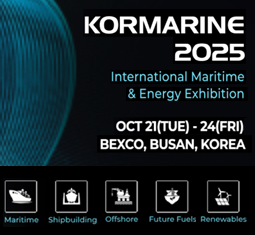Issue Baltic Cable Trial Exposes Fragility of Subsea Lifelines as Industry W…
페이지 정보
작성자 최고관리자 댓글 0건 조회 52회 작성일 25-08-31 14:48본문
Baltic Cable Trial Exposes Fragility of Subsea Lifelines as Industry Warns of Global Stakes
Iain Grainger, Chief Executive of IMCA
The trial now underway in Helsinki of the Eagle S oil tanker’s captain and two officers has highlighted Europe’s subsea vulnerabilities squarely. Prosecutors allege that on Christmas Day, the Cook Islands-flagged vessel dragged its 11-tonne anchor for nearly 90 kilometres across the seabed, severing the Estlink 2 power interconnector between Finland and Estonia along with four critical telecommunications cables.
Finnish authorities estimate the resulting damage at more than €70 million. For several days, both power flows and internet connectivity were disrupted, exposing the fragility of the infrastructure that underpins daily life. The defendants have pleaded not guilty, arguing that mechanical failure and adverse weather, rather than deliberate sabotage, caused the anchor to drop. Yet prosecutors are seeking prison sentences for aggravated criminal mischief and interference with telecommunications, citing what they describe as gross negligence.
The incident prompted NATO allies in the Baltic region to raise alert levels, reflecting how quickly an accident or an act perceived as one can escalate into a wider security concern. For the International Marine Contractors Association (IMCA), the case exemplifies a global problem that extends far beyond the Baltic Sea.
“Subsea cables are the invisible lifelines of the modern world,” said Iain Grainger, IMCA’s Chief Executive. “They carry 99 per cent of international data traffic and an increasing share of renewable power. When they are damaged, whether through negligence, accident or hostile action, the consequences are immediate and profound. The vulnerabilities exposed in this trial are not unique to Europe; they are global.”
While the immediate damages in the Baltic were put at €70–75 million, the broader economic consequences of subsea outages are far greater. Globally, the cable network industry is valued at over $10 trillion and supports approximately $50 trillion in annual financial transactions. Outages therefore jeopardise not only connectivity, but also financial markets, offshore energy flows, and governments’ ability to deliver on net-zero targets.
Grainger warns that this is where the true vulnerability lies. “The damage is not measured only in repair costs,” he said. “When cables fail, the ripple effects cut across economies and societies. That is why cable resilience must be treated as a strategic economic and security priority worldwide.”
IMCA, together with the European Subsea Cables Association (ESCA), has long cautioned that the capacity to repair damaged cables is under strain. The repair fleet that serves Europe and other regions is ageing, with limited new investment. Skills shortages among offshore engineers, jointers and vessel crews threaten to become a critical bottleneck. Regulatory barriers, particularly inconsistent and slow permitting regimes, often add weeks or months to recovery times even when spare parts and vessels are ready to mobilise.
Telecommunications cables are at least supported by long-established international maintenance agreements, which enable operators to share access to repair vessels and stockpiled equipment. Power cables, by contrast, are heavier, more technically complex, and more difficult to repair. They often cross multiple jurisdictions, creating delays and uncertainty when urgent action is required. With offshore wind farms and cross-border interconnectors expanding rapidly in Asia, North America, and Europe, IMCA warns that the risk is multiplying worldwide.
“Our members provide the marine capability that underpins both energy security and digital resilience,” Grainger said. “But without strategic renewal of fleets, investment in specialist skills, and urgent reform of regulatory frameworks to enable faster response times to unexpected outages, governments risk being caught unprepared. This is not simply about Europe’s security, it is a matter of global economic stability.”
The Baltic incident comes against a backdrop of heightened geopolitical tension and increasing public awareness of the vulnerabilities hidden beneath the sea. From the Nord Stream pipeline explosions to unexplained cable cuts in Asia, recent events have demonstrated how subsea infrastructure can become a flashpoint with cascading consequences.
For industry leaders, the message is clear. Cable resilience must be treated not as a technical afterthought but as a matter of national and international security. Grainger emphasises that only direct cooperation between governments, regulators and the subsea industry can deliver the readiness required to protect and repair this infrastructure when it matters most.
“Events in the Baltic are a stark reminder,” he concluded. “Cables may be invisible, but they are as critical as any pipeline, power station or fibre network on land. Protecting them must become a strategic imperative across every region of the world.”
■ Contact: The International Marine Contractors Association www.imca-int.com













